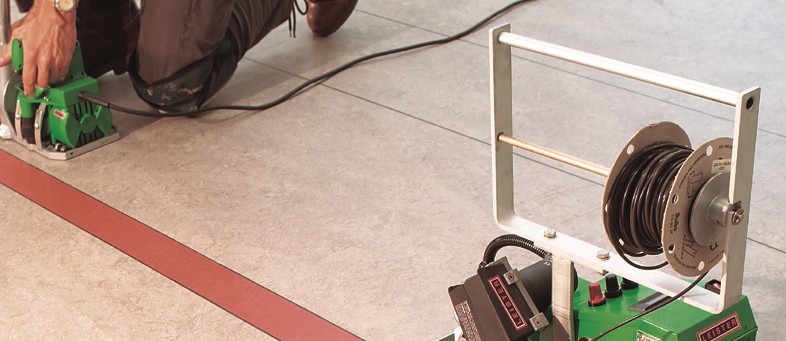Plastic welding is the best way to join plastic structures together, as it will result in a strong and reliable join. This can be achieved with plastic welding tools, which use hot air to allow for intermolecular diffusion. This could be to manufacture consumer products, install vinyl flooring, to create a roof membrane plus many more applications.
When plastic structures need to be joined together to create a new structure there are a few different ways that this can be achieved. Joins are also made by a process known as mechanical joining. This process uses screws and snap fits to make a join. There is another process as well – chemical bonding, which uses glues and adhesives to create a join. Both of these methods work and can be valuable, but they do not offer the strongest or most reliable join. For this you will want to use a process known as molecular bonding, which uses plastic welding to create a molecular bond between two thermoplastics. This will result in a strong join which will not deteriorate in quality over time.
Plastic welding is used in a huge range of different applications and in many different industries. A few examples of areas it is used include the manufacturing of items such as bowls, cups, electrical equipment, toys, surgical instruments, tubing, testing equipment, shower curtains, marquees, side curtains, vinyl flooring and even military applications. Plastic welding can be simple and straightforward to carry out with the right tools and equipment, and it also does not take long to complete either. There are 3 main stages to plastic welding, which include pressing (to keep parts lined up), heating (to allow intermolecular diffusion) and cooling (to solidify the new bond).
For the best results, it is essential that you use plastic welding tools from established suppliers. This way you know that you will get precise, accurate results along with a strong join which will last no matter what the application is. Most applications can be completed with the use of a heat gun, which is a hand held tool that will enable complete precision. These hand held tools can be used on thermoplastics such as PP, MDPE, LDPE, PVC, ABS and HDPE, and they are best used on plastics between the thickness of 3 and 8mm. For plastics that are thicker than this it is best to use an extrusion gun, or for applications such as installing vinyl flooring there are specialist machines available.
Plastic welding is the best way to join plastics structures together as it will give you the strongest possible join and one which will not let you down over time. In addition to this, plastic welding is also simple, straightforward and quick to do. It can be used for an enormous range of applications and on all kinds of thermoplastics, and this is achieved through the use of plastic welding and hot air tools. This could be installing vinyl flooring, creating a waterproof covering, manufacturing consumer products or medical equipment plus plenty more applications.



